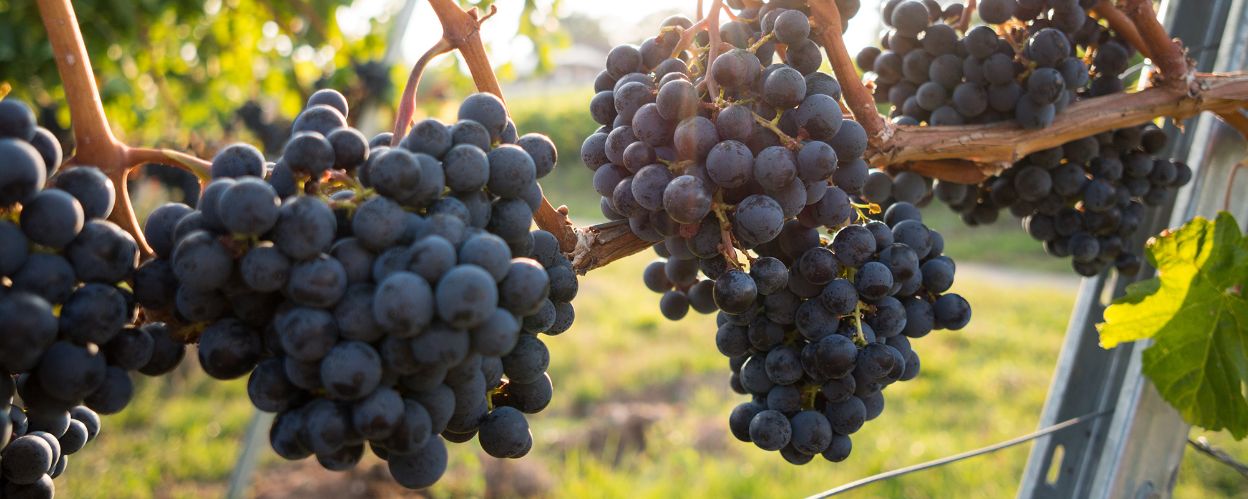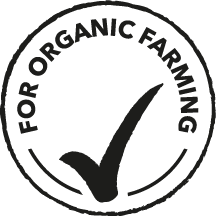
Viticulture
The vineyard looks good this year, the harvest promises rich grape yield and a delicious wine! Perhaps the location will even be awarded a prize. No matter in which growing region a winemaker is looking forward to the harvest and the prospects of an excellent wine, proper vine nutrition plays a central role in achieving this goal.
Sustainable cultivation results in successful grapevine growth
Every winemaker is familiar with the long process involving a lot of care before harvesting the coveted grapes every year. He also knows that the quality of wine begins in the sustainable cultivation of the vineyard with the balanced fertilization.
- Wine quality is based on assured nutrient supply.
- Potassium protects the vines from stress and strengthens resistance.
- Magnesium is the key element in viticulture.
- Sulfur and micronutrients have important functions in metabolism.
Wine quality begins with fertilization
The main goal of modern vine nutrition is the optimization of fertilization in accordance with soil fertility, yield, and quality. Soil must therefore contain all macro- and micronutrients in an easily absorbable form and balanced with each other.
The vine needs assured nutrient replenishment throughout the growing season - especially during peak demand and stress situations.
Nutritional deficiencies lead to:
- Chlorosis
- Growth depression
- Grape wilt
- Stem paralysis
- Vine failures
- Reduced wine quality (atypical aging (ATA), sulfide taints)
The vine is considered a chloride-sensitive crop and therefore prefers the sulfate form of potassium, as contained in Patentkali and potassium sulfate.
The most important nutrients for viticulture
Potassium - protects the vines from stress and strengthens resistance
- With an expected yield of approx. 11 t/ha of grapes, approx. 90 kg/ha of K2O are absorbed by the vine during vegetation.
- A good potassium supply improves the plants' ability to cope with temporary periods of water shortage, drought, and heat stress.
- High potassium concentrations in the cell sap and the associated higher sugar content lower the freezing point and therefore reduce the risk of frost damage.
- Potassium improves the wood maturation of the vine.
- This makes it winter-hardy and reduces vine failures.
- The grape yield is increased by improved fruit set.
- Potassium has a positive effect on wine quality.
- By increasing the extract content in the berries, the wine taste is improved.
Magnesium - counteracts bunch stem necrosis
- Low magnesium content in the soil, the K:Mg ratio is greater than 2:1
- Low humus content in the soil
- Changing weather conditions from wet and cold to warm
- Excessive N supply or late N replenishment
| Check | Twice foliar fertilization with EPSO products | |
| Infestation frequency with stem necrosis | 61% | 15% |
| Efficiency | – | 66% |
| Grape yield | 8.1 t/ha | 10.1 t/ha |
| Must weight | 75°Oe | 77°Oe |
Don't forget sulfur and trace elements
Sulfur
- Sulfur activates important enzymes in energy and fatty acid metabolism. It is essential for the synthesis of sulfur-containing amino acids, influences the entire protein synthesis and therefore has a positive effect on the yield.
- The increasing amino acid content in the must has a positive influence on the taste of the wine.
- The addition of sulfur increases the tannin and color content of the wine. This improves the quality of the wine. Tannins, for example, prevent oxidation of the wine and provide it with the characteristic rough note of dryness.
- Sulfur reduces susceptibility to botrytis.
- Lack of sulfur: The nitrogen absorbed cannot be converted into proteins and a signal is sent to the roots to take up less nitrogen. The plant's need for sulfur must therefore be met for optimal use of nitrogen.
Sulfur enables the plant to maintain its physiological processes optimally even under drought stress and avoid or at least minimize yield losses. Sulfur is a component of the metabolic product glutathione, which, as an antioxidant, renders oxygen radicals formed during drought stress harmless and thus prevents necrosis of the leaves. - The sulfur supply via net sulfur as a fungicide is not sufficient.
Boron
- Boron is of great importance for the fertilization of the flowers, among other things. Deficiency results in lower fruit set and malformed grapes.
- Boron activates the formation of the transportation sugar sucrose. In the berries, this sugar is then converted into glucose and fructose.
- Early berry drop (trickling) is prevented by an optimum boron supply.
Manganese
Manganese influences the synthesis of chlorophyll. With proper supply, the assimilation performance of the leaves is ensured and the formation of sugars, so important for the berries, is guaranteed.
Fertilizer recommendations for viticulture
The fertilizing nutrients should be applied in sulfate form, as grapes are chloride-sensitive crops. Especially young plants should be fertilized exclusively with sulfate in the first years of cultivation.
The following fertilization recommendations are calculated on the nutrient removal of the main harvest product based on optimal soil nutrient contents (in Germany soil content class "C"). Surcharges for site-specific losses due to leaching, fixation or erosion are not considered here.
Recommendation for soil fertilization
300-400 kg/ha Patentkali® with good soil supply
200 kg/ha ESTA® Kieserit gran. with good soil supply
200 kg/ha potassium sulfate with good soil supply
Product recommendation




Recommendation for foliar fertilization
Foliar fertilization effectively supplies the vines with the micronutrients boron and manganese.
It also supplements soil fertilization with rapidly available macronutrients such as magnesium and sulfur. In phases of strong growth, fertilization via the leaf covers peaks in demand and reliably ensures an optimum supply of nutrients even in the event of drought or insufficient sulfur mineralization.
This ensures the best yields and qualities. If deficiency symptoms have already occurred, foliar fertilization provides an effective and quickest possible remedy.
Product recommendations
- EPSO Top as a preventive measure. It is recommended to apply two to three times at two-week intervals after flowering.
- EPSO Microtop for preventive treatment of boron and manganese deficiency. It can be applied from the pre-flowering stage (BBCH 53 to 60) as a 2-5% solution (20-25 kg/ha) in one or two applications.
